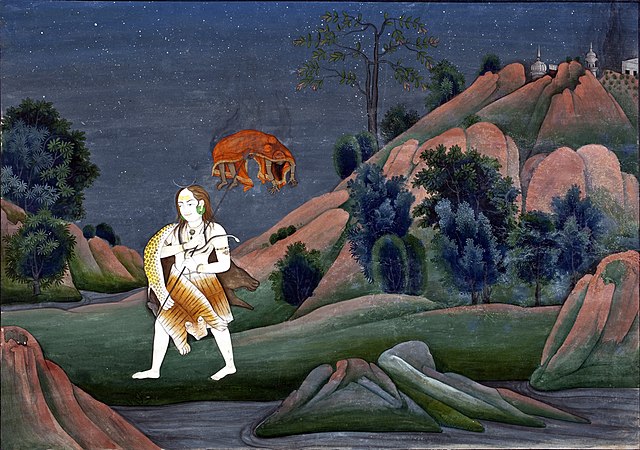Top Qs
Timeline
Chat
Perspective
Manikarnika Ghat
Hindu shrine and open crematorium From Wikipedia, the free encyclopedia
Remove ads
Manikarnika Ghat (Hindi: मणिकर्णिका घाट) is one of the holiest[1] cremation grounds among the sacred riverfronts (ghats), located on the banks of River Ganges, in the city of Varanasi in the Indian state of Uttar Pradesh. In Hinduism, death is considered a gateway to another life marked by the result of one's karma. It is believed that a human's soul attains moksha, and hence breaks the cycle of rebirth when cremated here.[2]
The ghat is named after Sati's earrings which fell there.[3] The Hindu genealogy registers at Varanasi are kept there.
Remove ads
Location
The Manikarnika Ghat is located in Varanasi, India and is flanked by the Dashashwamedh Ghat and the Scindia Ghat
Actual origin

The Manikarnika Ghat is one of the oldest ghats in Varanasi. It is mentioned in a Gupta inscription of 5th century.[4] It is revered in Hinduism. When Mata Sati (Adi Shakti) sacrificed her life and set her body ablaze after Raja Daksh Prajapati (one of the sons of Brahma) tried to humiliate Shiva in a Yagya practiced by Daksh, Shiva took her burning body to the Himalaya. On seeing the unending sorrow of Shiva, Vishnu sent the Divine chakra to cut the body into 51 parts, which then fell to earth. These are called "Ekyavan Shaktipeeth". Shiva established Shakti Peeth wherever Sati's body had fallen. Mata Sati's ear ornament fell at Manikarnika Ghat
Remove ads
The Manikarnika shrine as a Shakti Peeth

The Manikarnika shrine is an important place of worship for Shaktism sect of Hinduism. It is near to the Kashi Vishwanath Temple. The mythology of Daksha yaga and Sati's self immolation is the mythology behind the origin of Shakti Peethas. The etymology of the place is due to this mythology. It is believed that Sati Devi's Ear Rings has fallen here. Manikarna in Sanskrit means Ear Rings.[5]
Shakti Peethas are shrines that are believed to be enshrined with the presence of Shakti due to the falling of body parts of the corpse of Sati Devi, when Shiva carried it and wandered. There are 51 Shakti Peeth linking to the 51 letters or akshar in Sanskrit. Each temple have shrines for Shakti. The Shakti of Manikarnika is addressed as Vishalakshi & Manikarni.
Manikarnika Kund

The well at the ghat is called Manikarnika Kund and was built by Vishnu.[6]
Proposal
A proposal for renovating the Manikarnika ghat has been proposed by Departments of Landscape Architecture at the University of Illinois at Urbana, Champaign (UIUC), USA, and Bhanubhen Nanavati College of Architecture for Women (BNCA), Pune, India.[7] A proposal for renovating and redevelopment the Manikarnika ghat is in progress by Eastern Infrastructure Fund of Varanasi, India.[8]
See also
- Ratneshwar Mahadev temple
- Ghats in Varanasi
- Dom, an ancient community that handles cremation
Manikarnika Ghat in art
- Edwin Lord Weeks (1849 – 1903), The Last Voyage, 1884
- Edward Lear (1812–1888) Cityscape, 1873
- The history of the world; a survey of a man's record" (1902) Illustration
- Eve Of The Eclipse Of The Moon 25 November 1825, Litograph by James Prinsep
- Picturesque India. A handbook for European travellers, J. Pedder (1850-1929), 1890
References
Wikiwand - on
Seamless Wikipedia browsing. On steroids.
Remove ads







